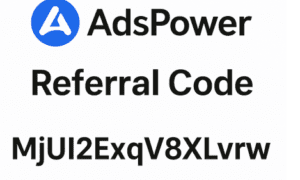Imagine the frustration of waiting days for payment approvals, delayed transactions holding up crucial business operations, or missing out on time-sensitive opportunities due to outdated financial processes. In today’s fast-paced digital economy, traditional banking delays are more than inconveniences—they’re costly barriers to growth. Businesses and individuals need agile, immediate solutions to manage finances without the lag. Enter virtual cards: the modern answer that turns hours of waiting into seconds of action.
The High Cost of Waiting
Traditional payment methods—paper checks, wire transfers, even standard card issuance—come with inherent delays. Physical cards take days to arrive by mail. Check clearances can tie up funds for a week. Account setups require manual reviews and verifications. For businesses, these delays cascade into missed vendor deadlines, strained cash flow, and operational bottlenecks. Individuals face similar friction, like being unable to make urgent online purchases or subscriptions due to temporary card unavailability. Speed isn’t just convenient; it’s competitive currency.
Virtual Cards: Your Instant Financial Toolkit
Virtual cards eliminate these bottlenecks entirely. These are digital card numbers, generated instantly, linked to your existing bank account or credit line, and ready for immediate use. Unlike plastic cards, they require no manufacturing, shipping, or physical handling. With a few clicks, users create unique card details for transactions, subscriptions, or vendor payments—bypassing traditional waiting periods entirely. Platforms offering Instant virtual cards empower users to generate, fund, and deploy cards in real-time, 24/7.
How Instant Activation Works
The process is strikingly simple. First, users access a secure digital banking platform or financial app. After a one-time account setup (which itself is often expedited via digital verification), they navigate to a virtual card section. Here, they specify parameters like spending limits, expiration dates, and merchant restrictions. With a confirmation, the system generates a unique 16-digit card number, CVV, and expiry—all within seconds. Funds are drawn directly from a linked source, and the virtual card is immediately active for online, in-app, or over-the-phone transactions. No waiting for emails, mailers, or approvals.
Beyond Speed: Control and Customization
Instant access is just the start. Virtual cards offer unprecedented control over spending. Users can: – Set exact spending limits per card, preventing budget overruns. – Restrict usage to specific merchants, dates, or transaction types. – Generate single-use cards for subscriptions or trials, avoiding unwanted renewals. – Monitor transactions in real-time via dashboards, enhancing oversight. This granularity transforms financial management, reducing fraud risks and simplifying reconciliation.
Fortified Security
Virtual cards are inherently safer than physical alternatives. Each card can be locked to a single merchant, rendering stolen details useless elsewhere. Temporary card numbers shield primary account information during online purchases. If a virtual card is compromised, users can freeze or delete it instantly—without replacing their core bank card. This layered security minimizes exposure, making virtual cards ideal for high-risk environments like e-commerce or recurring payments.
Real-World Applications
Businesses leverage instant virtual cards for: – Vendor Payments: Pay contractors or suppliers immediately upon approval. – Employee Expenses: Issue cards for travel or purchases with pre-set limits. – Subscription Management: Assign unique cards to SaaS tools for easy tracking. Individuals use them for: – Online Shopping: Secure checkout without sharing primary card details. – Travel: Generate cards for bookings, limiting exposure on public Wi-Fi. – Parental Controls: Fund cards for teens with strict merchant locks.
Embracing the Future of Finance
The shift to instant virtual cards reflects a broader move toward agile, user-centric finance. As digital wallets and contactless payments become norms, the demand for real-time solutions will only intensify. Financial institutions and fintech innovators are prioritizing APIs and automation to make virtual card integration seamless—embedding them within accounting software, expense apps, and banking portals. For users, this means less friction and more focus on strategic goals.
Getting Started
Adopting instant virtual cards requires minimal setup. Choose a provider offering robust security, intuitive controls, and real-time generation. Many platforms support integration with popular accounting tools like QuickBooks or Xero. For small businesses, solutions often include free trials or tiered plans scaling with usage. Individuals can access them via neobanks or credit card issuers. The key is prioritizing speed without sacrificing security—ensuring your financial toolkit keeps pace with your ambitions.
Ditching delays isn’t just about convenience; it’s about reclaiming control. With virtual cards, financial agility is no longer a luxury—it’s instantly accessible.
Read More From Techbullion



































